Moto G100
If you’re used to Motorola’s Moto G smartphones being decently-specced cheap phones, you’re going to be in for a shock when you read more about the Moto G100; but its mid-range price tag also nets you a stand and cable to use for its Ready For system.
What’s Ready For? It’s a way of using your smartphone together with a computer monitor or TV, so you can use the bigger screen as a workstation, gaming platform or way to stream media. It’s a cool concept, in the vein of Samsung and Huawei’s alternatives, but it’s a shame you’re forced into it - you can’t buy the Moto G100 without the stand.
Ignore the dock and cable for a moment, and the Moto G100 is Motorola’s most powerful G-series phone ever. It has the premium Snapdragon 870 chipset, six total cameras, and a giant display, and is great for streaming, gaming and more.
The Moto G100 bears more than a passing resemblance to the Motorola One 5G / Moto G 5G Plus, and it makes sense that the brand’s second affordable 5G phone has a lot in common with its first. Some of the major annoyances of that phone are back though like its hard-to-use fingerprint sensor and annoying Google Assistant button.
This does feel like a pretty good mid-range phone, but it’s straight-up impossible to recommend if you’re not interested in Ready For, as you’ll be paying loads more for tech you don’t need. Well, unless Motorola changes its mind and lets you buy the phone on its own.
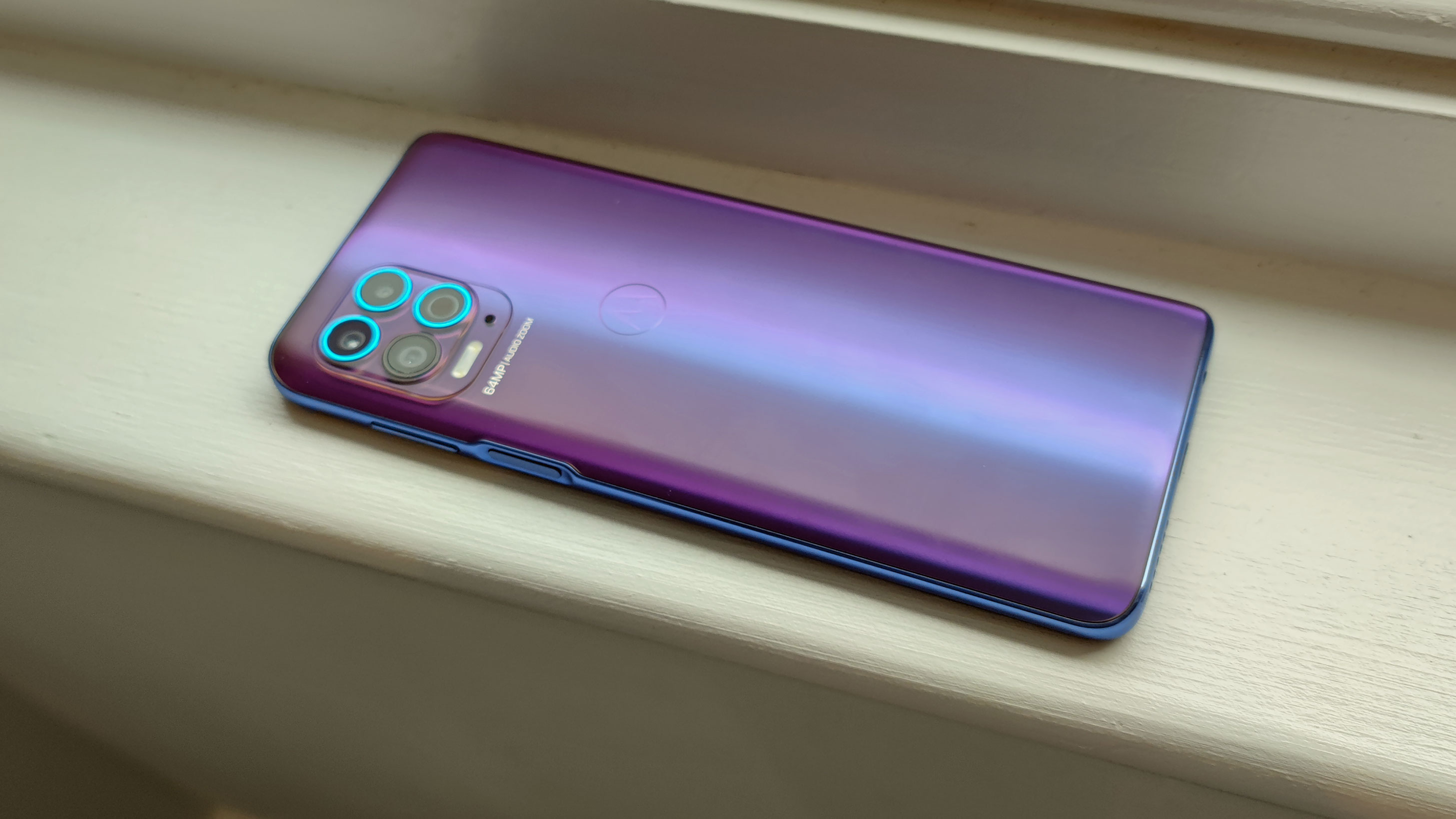
Moto G100 release date and price
We don’t have an exact release date for the Moto G100 - expect it to go on sale soon though.
The phone costs £450 (roughly $620, AU$820), and while we don’t know about Australian availability it’s definitely not coming to the US. For that price you’re getting the phone as well as the Ready For dock and a connector cable - you can’t buy the phone alone.
Given that the Moto G30 costs £159 (about $220 or $290) and the Moto G 5G Plus started at £299 in the UK (about $375 or AU$535), that’s a lot to pay for a budget phone.
Design and display
The Moto G100 is a pretty big phone, one we have trouble comfortably holding in one hand. It’s thick and heavy too, though we don’t have dimensions or a weight just yet.
The phone’s design is busy, to say the least. There’s the four cameras on the back, the two on the front, a USB-C port, a 3.5mm headphone jack, a fingerprint scanner on the right edge embedded in the power button, a volume rocker just above that, a Google Assistant button on the left edge, and a SIM tray just below that which juts out a little bit, so it looks like a button itself. Oh, and there’s a Moto logo on the back, which looks slightly like a fingerprint scanner but isn’t.
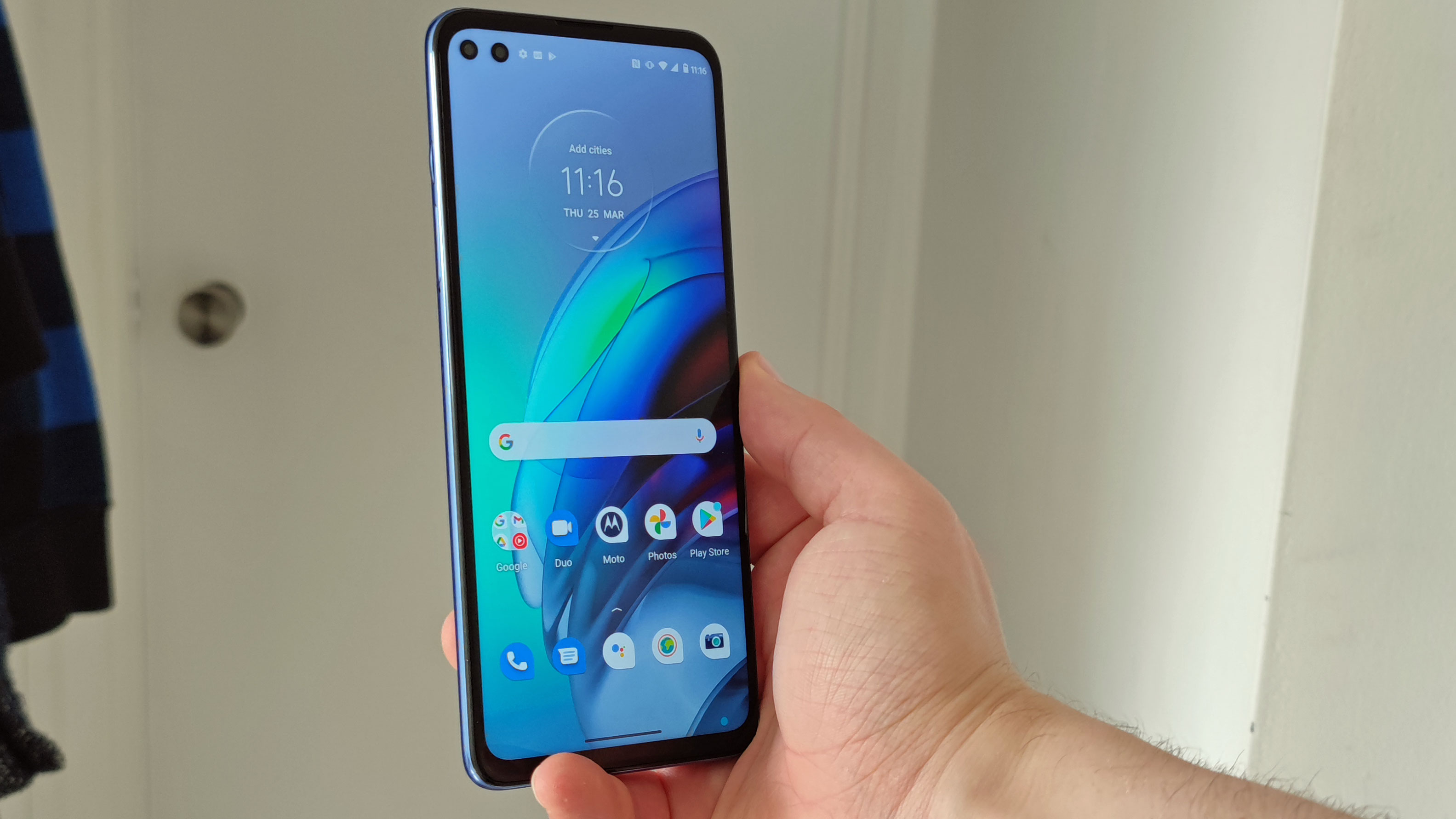
We have fairly average-sized hands but we couldn’t reach the fingerprint scanner easily, and our thumb barely reached halfway up the screen - this is a phone for two-handed use only. The fingerprint scanner is a little temperamental too, and it often didn’t pick up our finger on the first try.
If we have one positive to say about the phone, it's that it looks pretty good on the back, with our review unit having an aurora pattern of lilacs and blues. This probably won't come out in our photos too well but trust us, it looks good.
The display is a 6.7-inch FHD+ panel - it has a 90Hz refresh rate, a 21:9 aspect ratio and supports HDR10 - those specs are roughly fitting for a phone of its market segment, though some phones support higher refresh rates. You don’t get too many handsets with this long, thin aspect ratio though, so if you like narrower phones it’s one of few devices for you.
Displays like this can be great for split-screening apps, as well as watching certain movies in the same aspect ratio as it reduces letterboxing, but it makes the phone a little unwieldy too.
Cameras and battery life
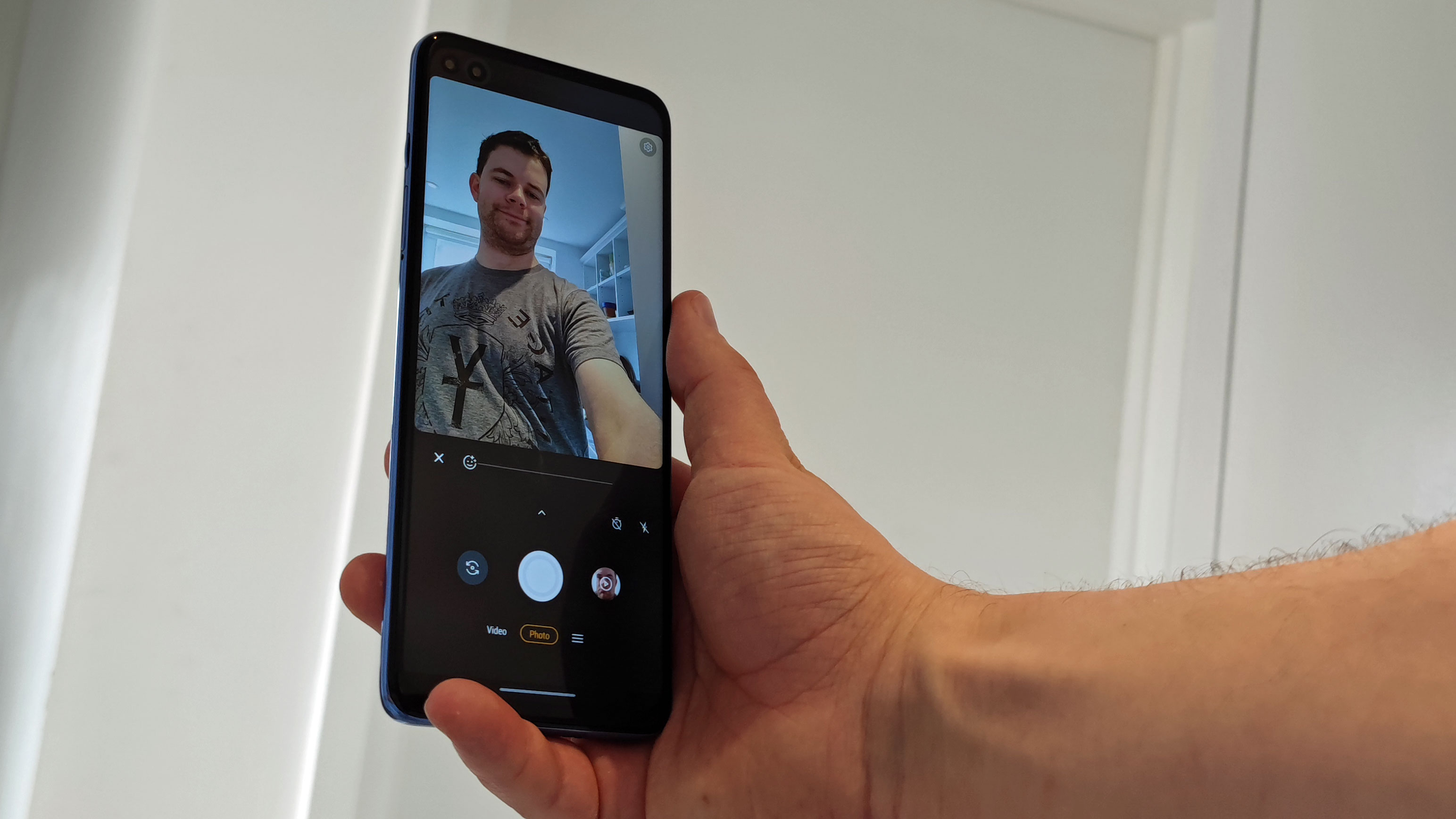
When it comes to cameras, the Moto G100 is named after the number it has - almost. It’s got six, which is loads for a smartphone, though admittedly not quite 100.
They are a 64MP main, 16MP ultra-wide (also used for the macro mode), 2MP depth sensor and Time-of-Flight (ToF) scanner on the back, and a 16MP camera on the front with an 8MP ultra-wide companion for group selfies.
We haven’t put the Moto G100 through our usual battery of camera tests (or battery tests, for that matter), but we spent a little time testing out the phone - given Motorola’s phones are typically quite a mixed bag when it comes to photography, we were impressed by the improvements here.
Photos looked fairly vibrant and bright, with plenty of detail, something that was the case for ultra-wide pictures too - though the camera app did crash a few times when we tried to jump to that lens. Our biggest area of concern, or ‘will definitely test this further for our review’ subject, is the selfie camera, as our face seemed to look quite blotchy in pictures (more so than in real life, obviously) and we need to work out why.
Video records at 4K at up to 60fps or 6K at up to 30fps, the latter being a spec we haven’t seen many phones provide (as the top-end devices go from 4K up to 8K). On the front camera video goes up to 1080p, and the lag when trying to record with this snapper was worrying.
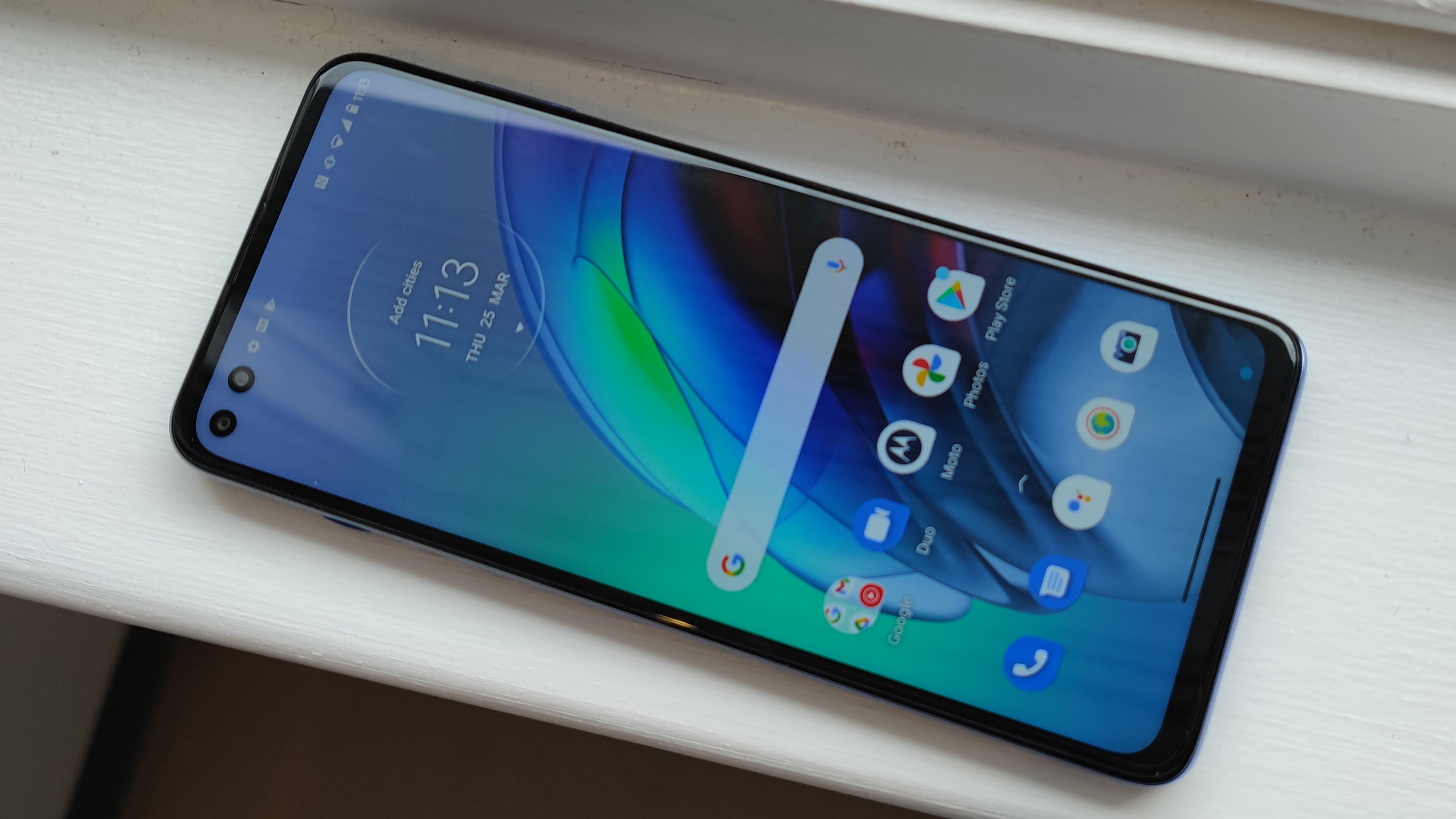
While video recording and photography seems an upgrade on previous Motorola phones, as the previous description mentions, we did find a few issues with the camera app itself. These include some crashes and significant stutters, but hopefully a patch will fix these problems soon.
The battery capacity is 5,000mAh, with 20W wired charging. We haven’t been able to test out the staying power of the phone yet, but 5,000mAh is a pretty good size. The charging speed suggests it’ll take a while to power up, though.
Specs and performance
Motorola’s G-series phones typically use low-end or mid-range chipsets - that’s not the case here, as the G100 uses Qualcomm’s top-end Snapdragon 870 (which, we should point out, isn’t its top top chipset, but it’s close).
We put the phone through the Geekbench 5 benchmark test - its multi-core score of 2892 puts it between the Samsung Galaxy Note 20 (2701) and Samsung Galaxy S20 Plus (3034), which is pretty good for a relatively low-cost phone.
The handset was pretty good for gaming, with the processor making sure there wasn’t much stuttering or lag, though the length of the phone made reaching central buttons a little challenging.
As well as gaming, you’ll likely be using the Moto G100 for its ‘Ready For’ system where you can plug it into your computer monitor or TV to get some extra functions, like the ability to cast your streaming choices onto the bigger screen, or use the large display for work functions. We’ve got an explainer on Ready For here.
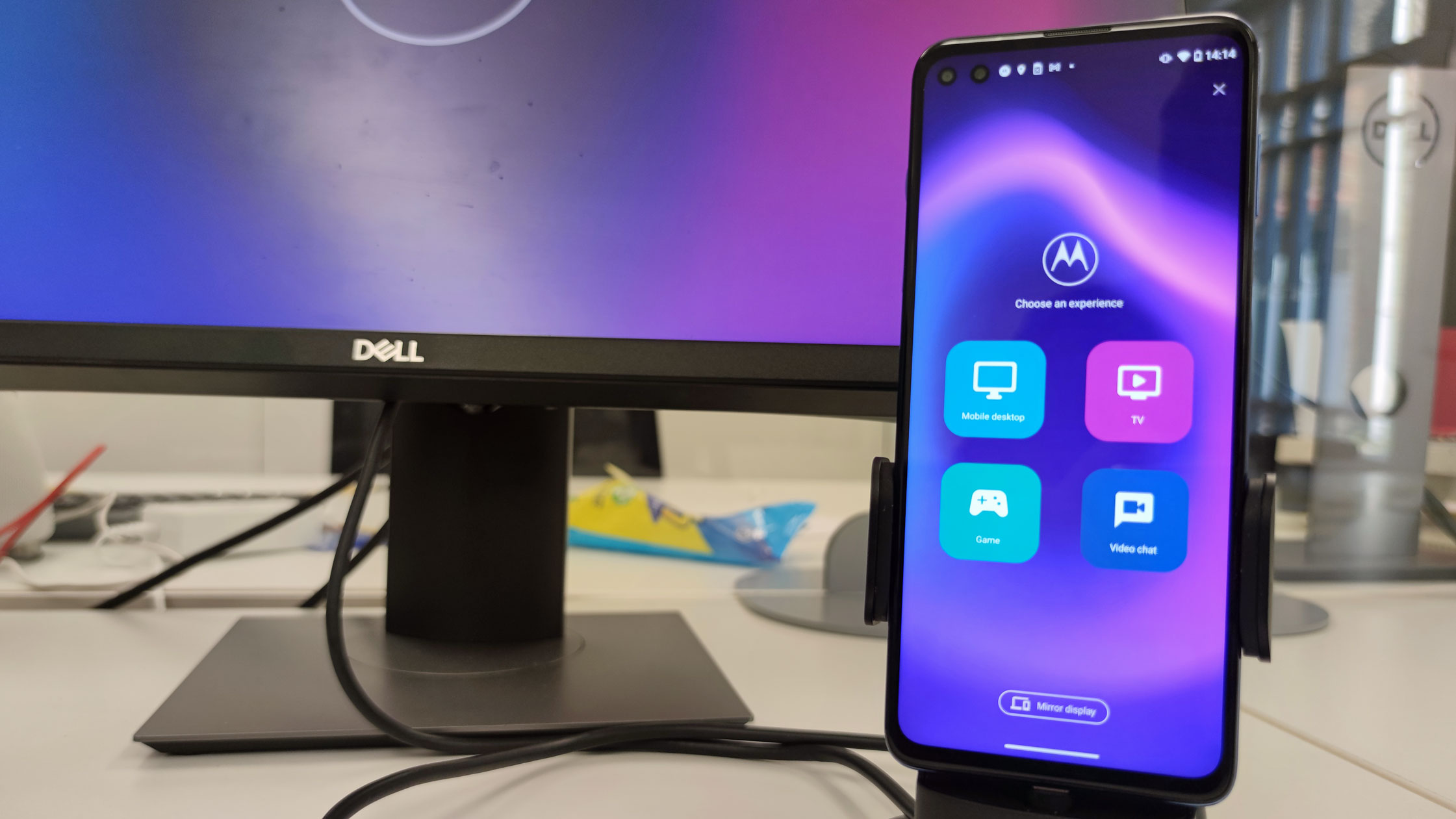
As with all Motorola phones, the Moto G100 runs stock Android, with a few Moto twists like the ability to add visual styles, and ‘Moto Actions’, like doing a double-karate-chop motion to turn on the flashlight.
If you want a ‘pure’ Android experience, technically Moto phones are a step away from that compared to, say, Pixel or Nokia phones, but we’d say Motorola’s additions are great.
The phone comes with Android 11 installed, but it’ll likely receive at least two years of upgrades.
Early verdict
We liked the Moto G100’s top chipset, camera improvements and rear design, though took issue with a few other design elements, like its size, weight and the irritating fingerprint scanner. But you might find yourself ignoring both the positives and negatives, depending on what you think of Ready For.
Motorola’s decision to only sell the Moto G100 with Ready For is a baffling one - the phone is pretty good, and could go down a storm if coupled with an affordable price tag. But if you’re not interested in this multitasking system, it’s just impossible to recommend the device based on our initial impressions.
If you think Ready For is for you, then consider that it’s also available on the Motorola Edge Plus, and is coming to future Moto phones. So if you want to use Ready For, and think the Moto G100 is good value, it’s worth going for. But if you don’t sit at the center of that Venn diagram, there are other phones that will serve you better.
- First tested March 2021
0 comments:
Post a Comment